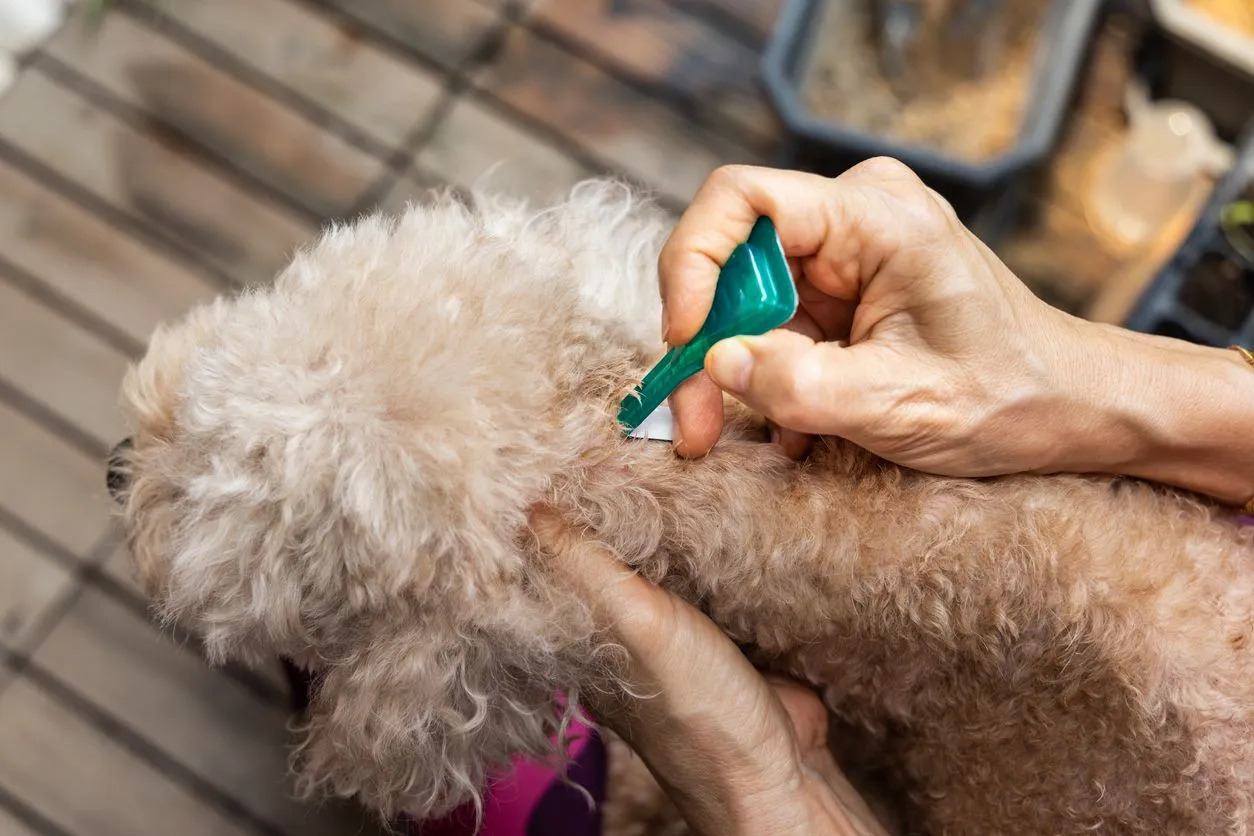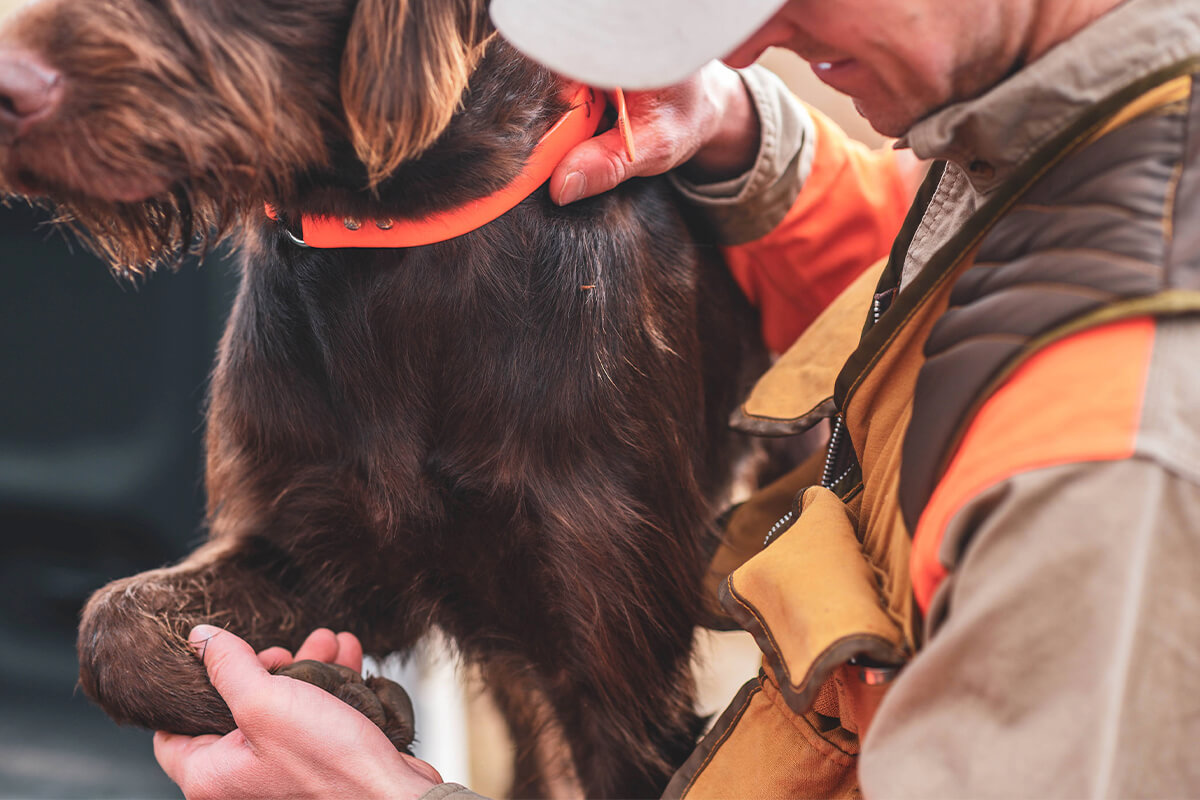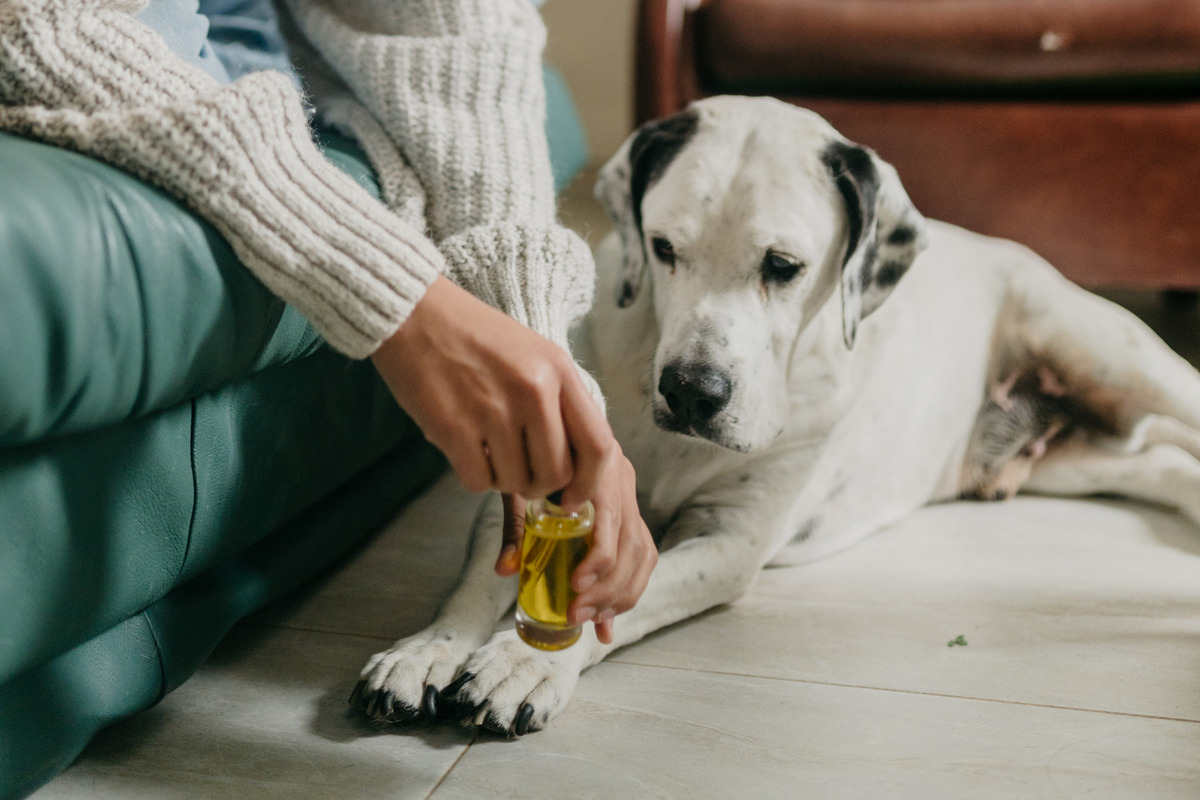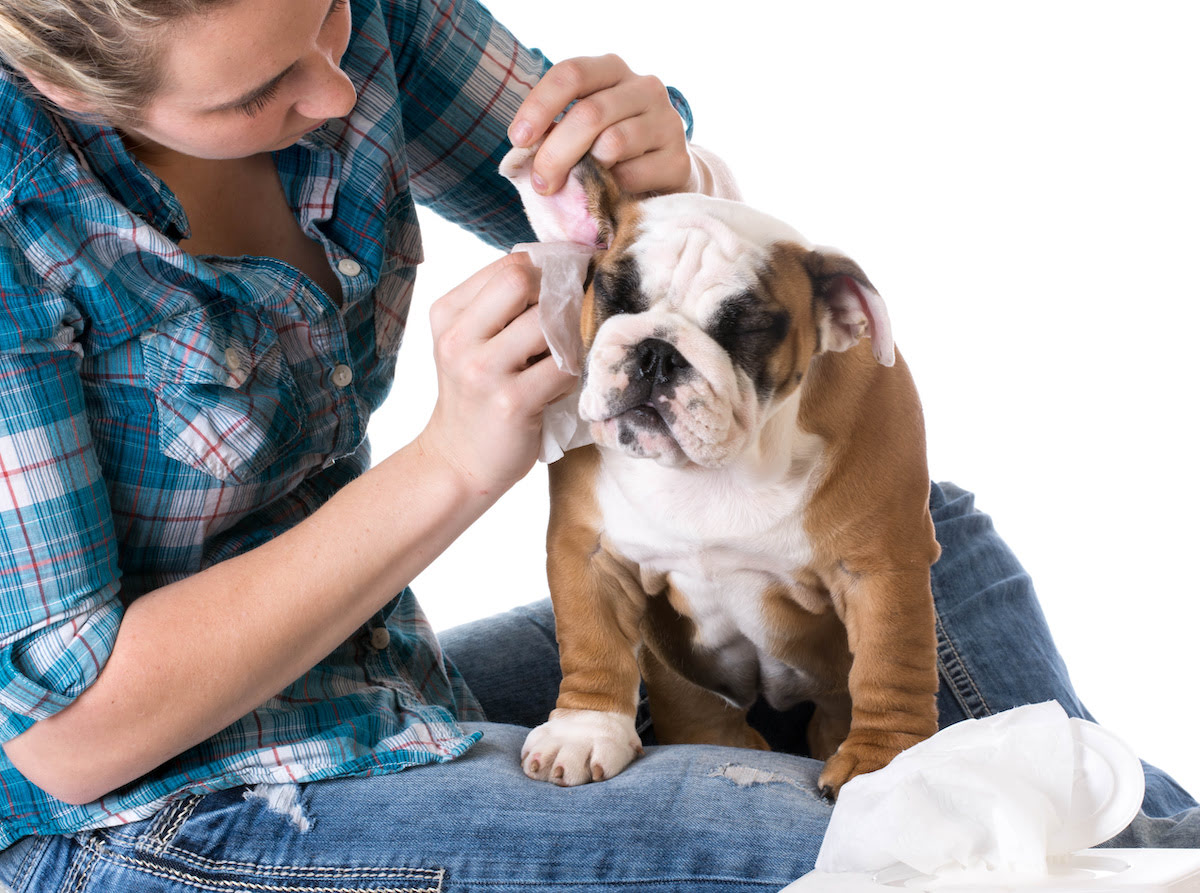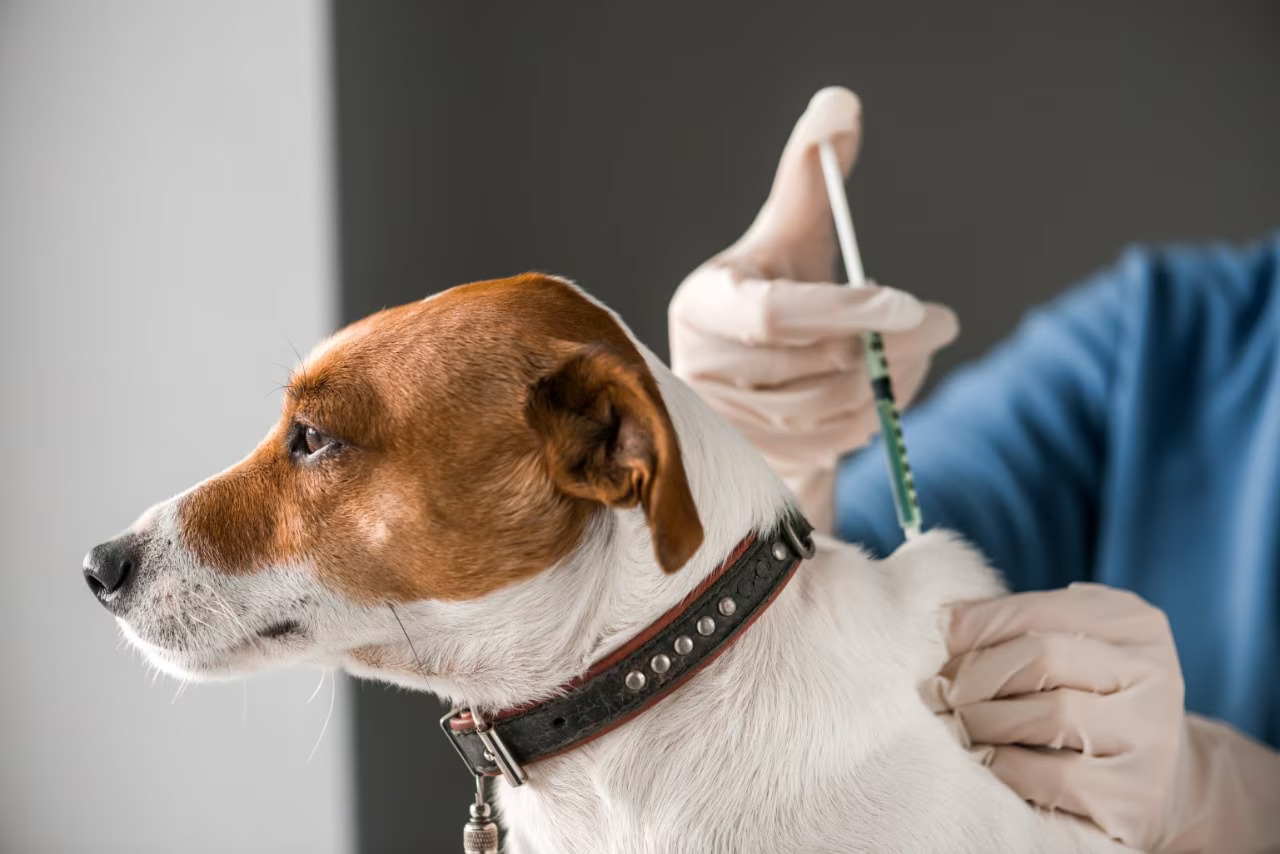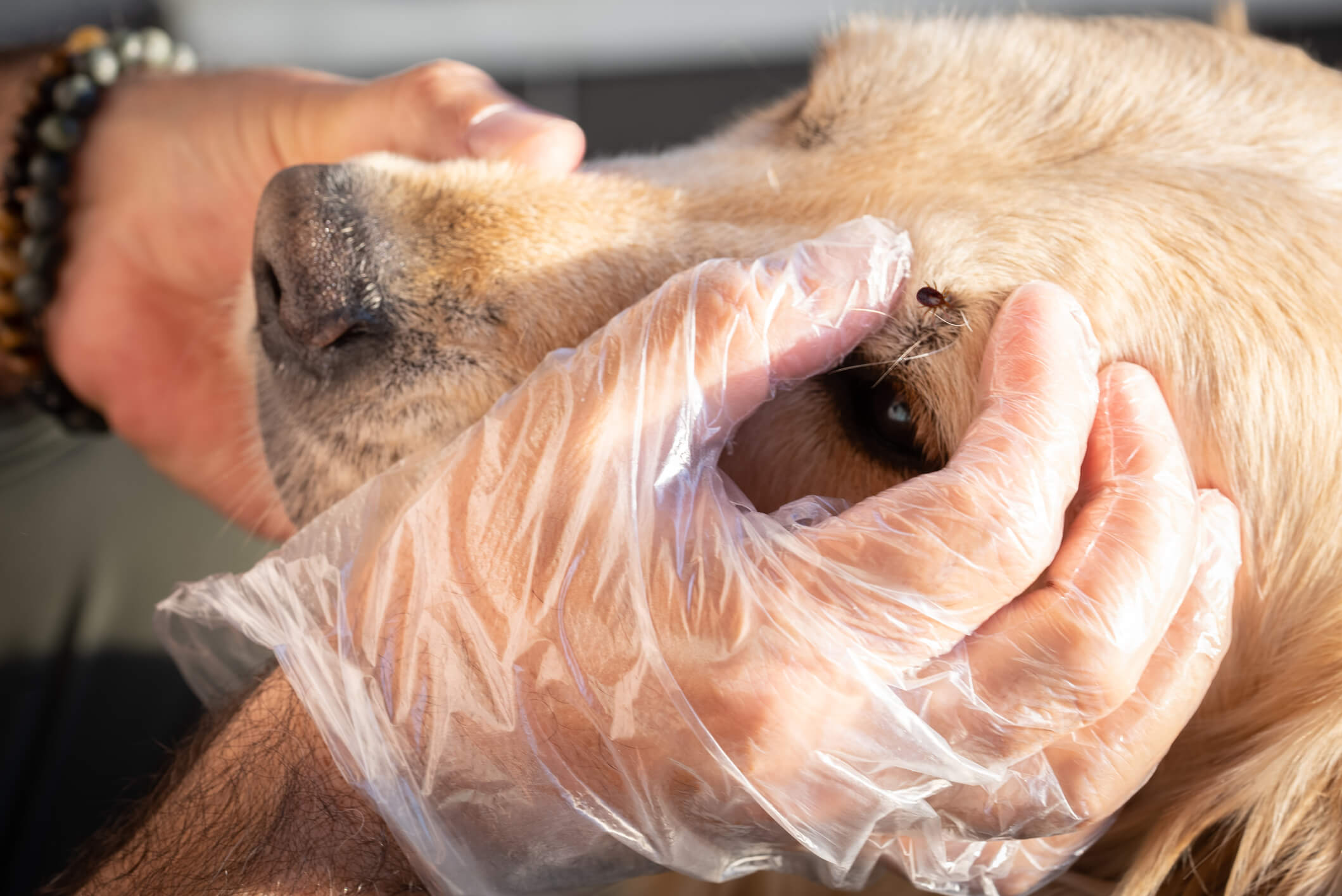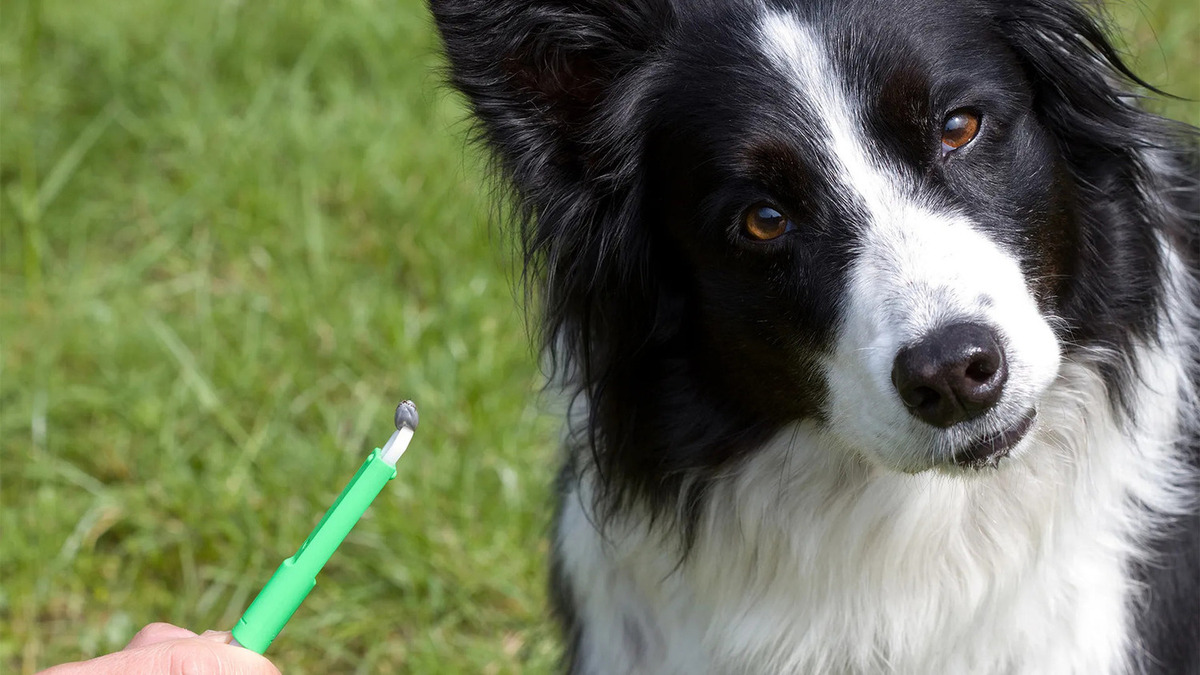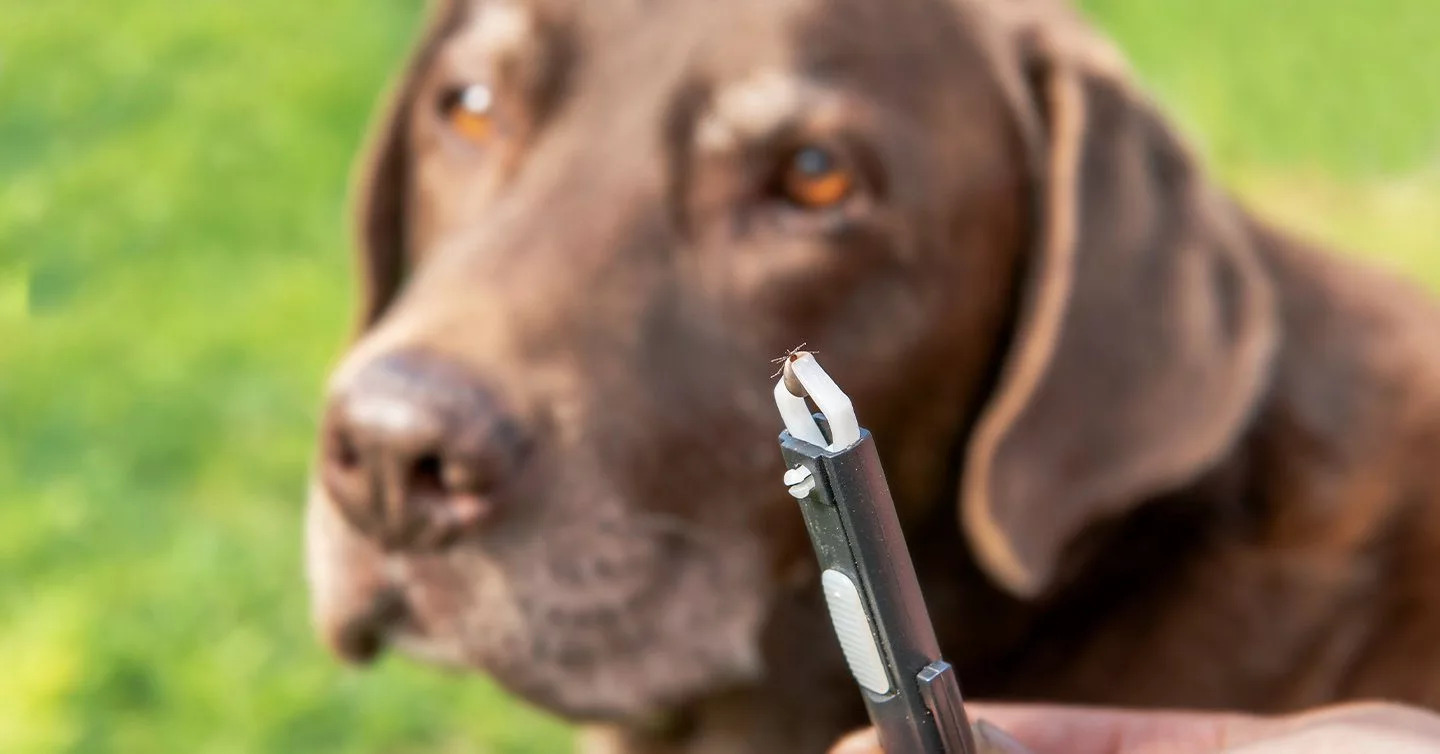Home>Health & Wellness>Common Health Issues>How To Prevent Ticks In Dogs
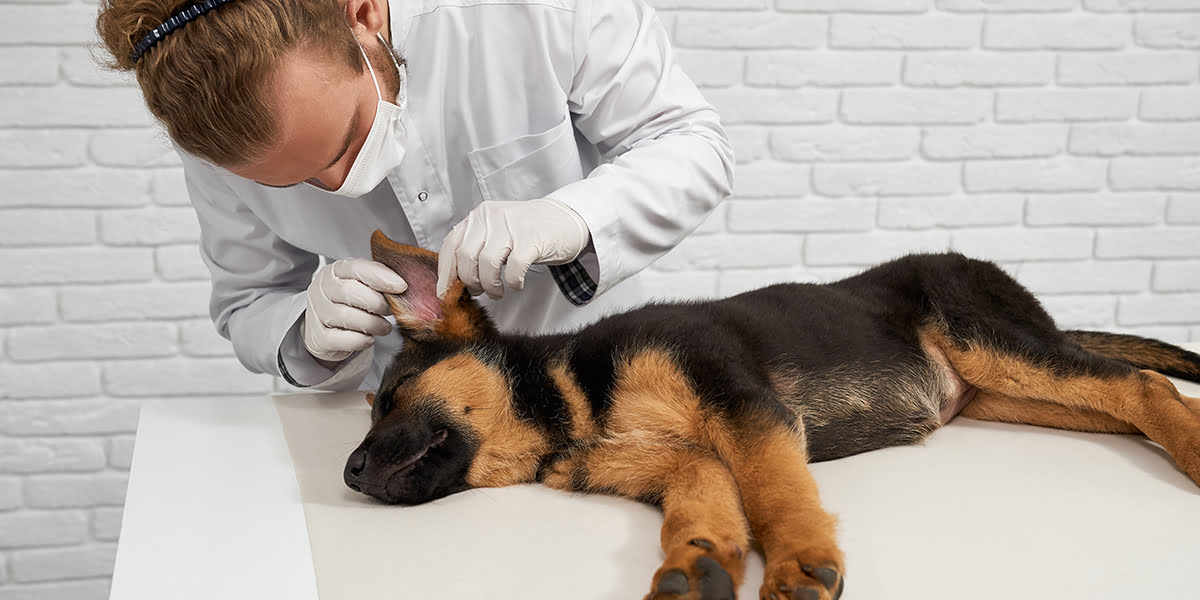

Common Health Issues
How To Prevent Ticks In Dogs
Modified: February 21, 2024
Learn how to protect your dog from ticks and prevent common health issues with our expert tips and advice. Keep your furry friend healthy and happy!
(Many of the links in this article redirect to a specific reviewed product. Your purchase of these products through affiliate links helps to generate commission for Pawsomeoldies.com, at no extra cost. Learn more)
Table of Contents
Introduction
Ticks are tiny, blood-sucking parasites that can pose a significant threat to the health and well-being of our beloved canine companions. These pesky creatures are not only a nuisance but also carriers of various diseases that can cause serious health issues in dogs. As responsible pet owners, it's crucial to understand the risks associated with ticks and take proactive measures to prevent infestations.
Ticks thrive in warm and humid environments, making them prevalent in many regions across the globe. They are commonly found in wooded areas, tall grass, and shrubs, where they patiently wait for a host to latch onto. Once attached to a dog, ticks can transmit harmful pathogens, such as bacteria and parasites, leading to illnesses like Lyme disease, ehrlichiosis, anaplasmosis, and Rocky Mountain spotted fever.
Preventing tick infestations in dogs is not only about safeguarding their health but also ensuring their overall well-being. By implementing effective preventive strategies and staying vigilant, pet owners can significantly reduce the risk of tick-borne diseases and provide their furry friends with a safer and more enjoyable outdoor experience.
Understanding the behavior and potential dangers of ticks is the first step in protecting our canine companions from these insidious pests. In the following sections, we will delve into the intricacies of tick prevention, including valuable tips for keeping dogs tick-free and the importance of thorough tick checks. Let's embark on this journey to safeguard the health and happiness of our four-legged friends.
Read more: How To Prevent Ticks And Fleas On Dogs
Understanding Ticks and the Dangers They Pose
Ticks are small arachnids that belong to the family Ixodidae. These parasitic creatures have a remarkable ability to latch onto a host, including dogs, and feed on their blood. While the act of feeding itself can cause discomfort and irritation to the dog, the real danger lies in the potential transmission of harmful pathogens.
Ticks are known vectors for a variety of diseases that can have severe consequences for dogs. One of the most well-known tick-borne illnesses is Lyme disease, caused by the bacterium Borrelia burgdorferi. This condition can lead to symptoms such as fever, lameness, swollen joints, and in severe cases, kidney damage. Another common threat is ehrlichiosis, a bacterial infection that can cause fever, lethargy, and bleeding disorders in dogs. Additionally, anaplasmosis, caused by the bacterium Anaplasma phagocytophilum, and Rocky Mountain spotted fever, caused by the bacterium Rickettsia rickettsii, are among the other serious diseases that ticks can transmit to dogs.
The dangers posed by ticks extend beyond physical health, as the psychological impact of dealing with a tick infestation can be distressing for both dogs and their owners. The constant itching and discomfort experienced by dogs due to tick bites can lead to anxiety and restlessness, affecting their overall well-being.
It's important to recognize that ticks are not just a concern during the warmer months. While they are more active in spring and summer, they can still pose a threat in the fall and even during mild winter periods. This underscores the year-round importance of implementing preventive measures to protect dogs from tick infestations.
By understanding the potential dangers associated with ticks, pet owners can appreciate the significance of proactive tick prevention. Through education and awareness, we can take meaningful steps to safeguard the health and happiness of our canine companions, ensuring that they can enjoy a vibrant and tick-free life.
Tips for Preventing Ticks on Dogs
Preventing ticks on dogs requires a proactive and multi-faceted approach to minimize the risk of infestation and protect our furry friends from the potential dangers associated with these blood-sucking parasites. Here are some effective tips for preventing ticks on dogs:
-
Use Tick Prevention Products: Utilize veterinarian-recommended tick prevention products such as spot-on treatments, oral medications, tick collars, and tick-repellent sprays. These products are designed to repel ticks and prevent them from latching onto your dog. Regular application and adherence to the recommended dosage are essential for optimal effectiveness.
-
Maintain a Tidy Outdoor Environment: Keep your outdoor living spaces well-maintained by regularly mowing the lawn, trimming shrubs, and clearing away leaf litter. Ticks thrive in tall grass and wooded areas, so creating a tidy environment can help reduce the prevalence of ticks in your dog's immediate surroundings.
-
Limit Exposure to Tick Habitats: When venturing into areas where ticks are prevalent, such as wooded trails or grassy fields, try to stay on cleared pathways and avoid dense vegetation. This can minimize your dog's contact with tick-infested areas, reducing the likelihood of tick attachment.
-
Perform Regular Tick Checks: After outdoor activities, thoroughly inspect your dog for ticks, paying close attention to areas such as the ears, neck, underarms, and between the toes. Promptly removing any attached ticks can prevent them from transmitting diseases to your dog.
-
Consider Vaccination: In regions where certain tick-borne diseases are prevalent, consult with your veterinarian about the availability of vaccines against diseases such as Lyme disease. Vaccination can provide an additional layer of protection for dogs at risk of exposure to tick-borne pathogens.
-
Groom Your Dog Regularly: Regular grooming not only helps maintain your dog's coat but also facilitates the early detection of ticks. Brushing and combing your dog's fur can reveal the presence of ticks, allowing for prompt removal before they have a chance to attach and feed.
-
Create a Tick-Free Indoor Environment: Implement measures to prevent ticks from entering your home, such as using tick control products in living areas and regularly washing your dog's bedding. This can help minimize the risk of tick infestations within the home environment.
By incorporating these preventive measures into your dog's care routine, you can significantly reduce the likelihood of tick infestations and mitigate the associated health risks. Remember, consistent vigilance and proactive tick prevention are key to ensuring the well-being and vitality of your canine companion.
Checking for and Removing Ticks
Regularly checking for ticks on your dog is a crucial aspect of tick prevention and early intervention. After spending time outdoors, especially in areas known to harbor ticks, it's essential to conduct thorough tick checks to promptly identify and remove any attached ticks before they have the chance to transmit harmful pathogens. Here's a detailed guide on checking for and safely removing ticks from your dog:
Conducting a Thorough Tick Check:
-
Post-Outdoor Inspection: After outdoor activities, bring your dog to a well-lit area and run your hands over their entire body, feeling for any unusual bumps or lumps. Ticks can vary in size, ranging from as small as a poppy seed to as large as a pea, so a meticulous tactile examination is crucial.
-
Focus on Tick-Favorable Areas: Pay close attention to areas where ticks are commonly found, including the ears, neck, underarms, between the toes, and around the tail. Ticks prefer warm, hidden spots, so be meticulous in your examination of these areas.
-
Visual Examination: In addition to feeling for ticks, visually inspect your dog's coat, parting the fur to expose the skin. Ticks may be visible to the naked eye, especially when engorged after feeding.
-
Use a Tick Comb: A fine-toothed tick comb can be a valuable tool for detecting and removing ticks from your dog's coat. Comb through the fur, paying particular attention to areas where ticks are likely to hide.
Safely Removing Attached Ticks:
-
Gather Necessary Tools: Before removing a tick, prepare a pair of fine-tipped tweezers or a specialized tick removal tool. It's essential to have the right tools on hand to ensure safe and effective tick removal.
-
Grasp the Tick Carefully: Using the tweezers, grasp the tick as close to the skin's surface as possible. Be gentle but firm to avoid crushing the tick, as this can release additional pathogens into your dog's bloodstream.
-
Pull Straight Out: With a steady motion, pull the tick straight out without twisting or jerking. It's important to maintain a steady, even pressure to ensure that the tick is entirely removed, including its mouthparts.
-
Disinfect the Area: After removing the tick, disinfect the bite site and your tools with rubbing alcohol or an antiseptic solution. This helps prevent potential infection and ensures proper hygiene.
-
Dispose of the Tick: Place the tick in a container with rubbing alcohol to kill it, or flush it down the toilet. Avoid crushing the tick with your fingers and ensure proper disposal to prevent re-infestation.
By diligently checking for ticks and safely removing any that are found, you can effectively minimize the risk of tick-borne diseases and protect your dog's well-being. Remember to monitor your dog for any signs of discomfort or unusual symptoms after a tick bite, and consult your veterinarian if you have any concerns about potential tick-borne illnesses.
Conclusion
In conclusion, safeguarding our canine companions from the perils of tick infestations is a responsibility that extends beyond basic pet care. By understanding the behavior of ticks and the potential dangers they pose, pet owners can take proactive measures to prevent infestations and protect the well-being of their beloved dogs.
The tips for preventing ticks on dogs encompass a holistic approach that combines the use of tick prevention products, environmental management, regular tick checks, and vaccination in high-risk regions. These strategies not only reduce the risk of tick-borne diseases but also contribute to creating a safer and more enjoyable outdoor environment for dogs.
Furthermore, the importance of thorough tick checks cannot be overstated. Regular post-outdoor inspections and meticulous tactile examinations enable pet owners to promptly identify and safely remove any attached ticks, minimizing the risk of disease transmission. By incorporating these practices into their routine, pet owners can actively mitigate the impact of tick infestations on their dogs' health and well-being.
It's essential to recognize that tick prevention is an ongoing commitment that requires vigilance and consistency. Whether it's maintaining a tidy outdoor environment, grooming dogs regularly, or creating a tick-free indoor space, every proactive measure contributes to the overall protection of our furry friends.
Ultimately, the bond between humans and dogs is built on trust, companionship, and a shared journey through life. By prioritizing tick prevention and taking proactive steps to safeguard our dogs from these insidious parasites, we uphold our commitment to nurturing their health, happiness, and vitality.
As we navigate the world alongside our loyal canine companions, let's continue to champion their well-being by staying informed, proactive, and dedicated to the prevention of tick infestations. Together, we can create a safer and more vibrant world for our beloved dogs to thrive in, free from the burdens of tick-borne illnesses.
